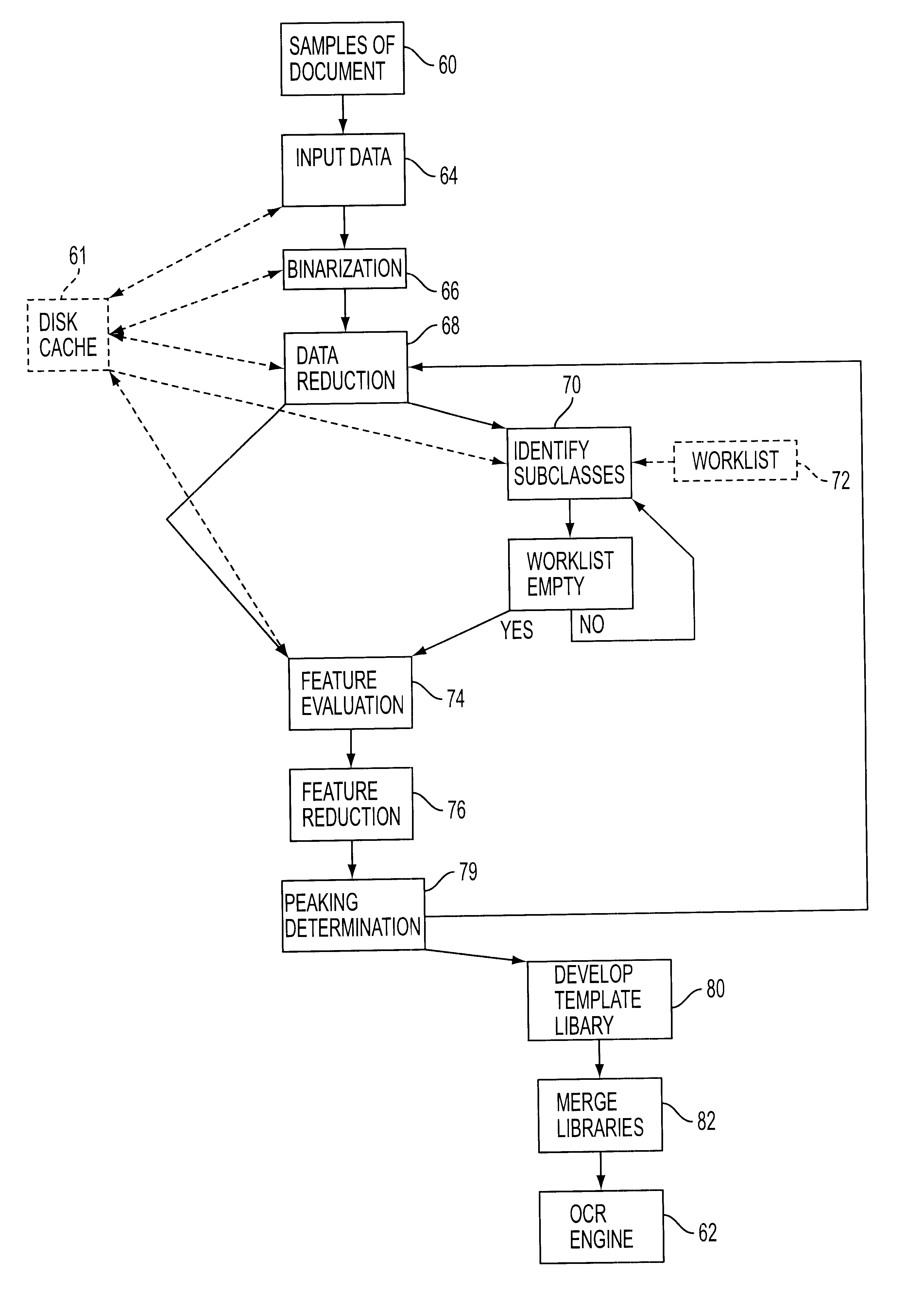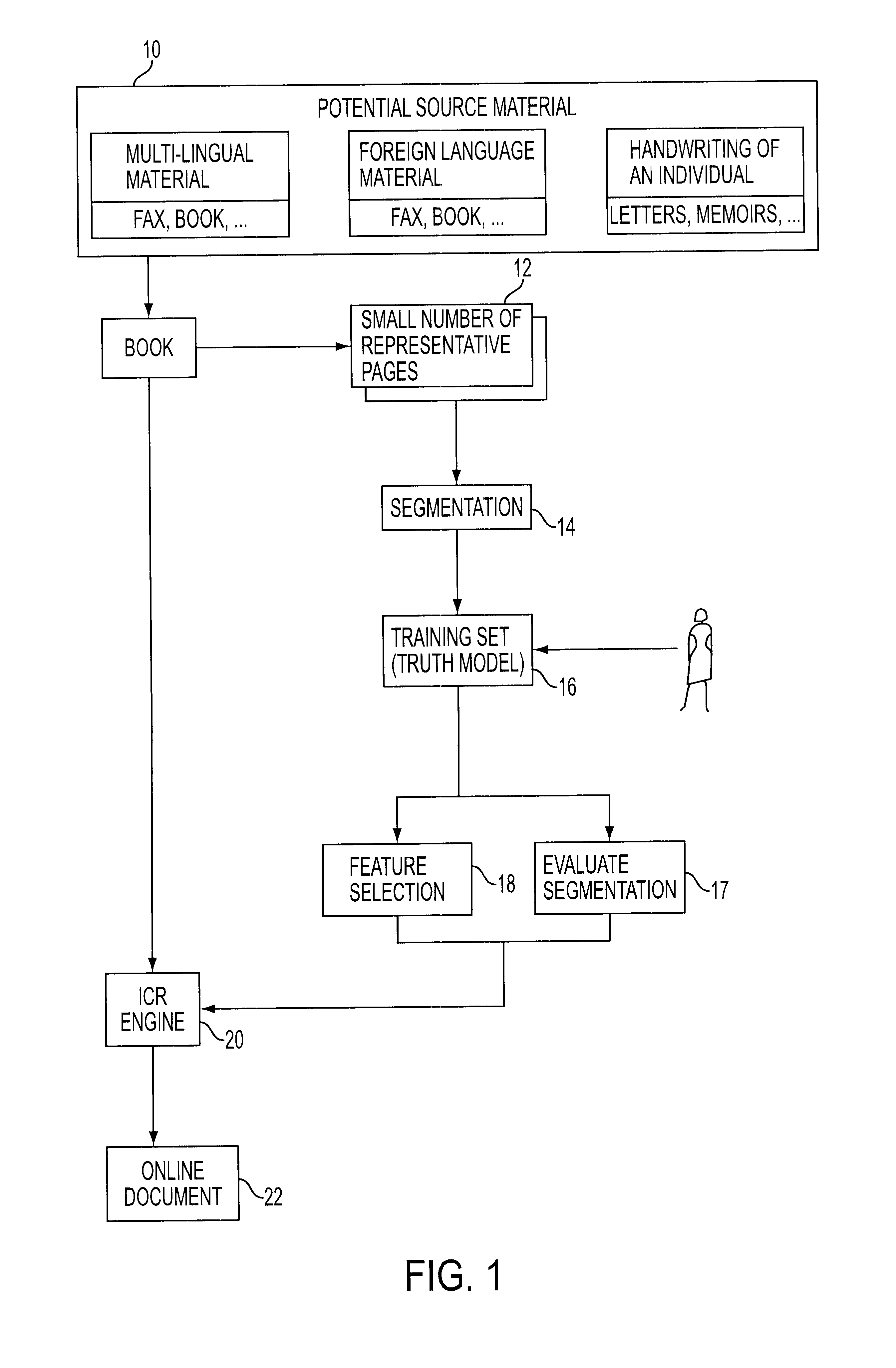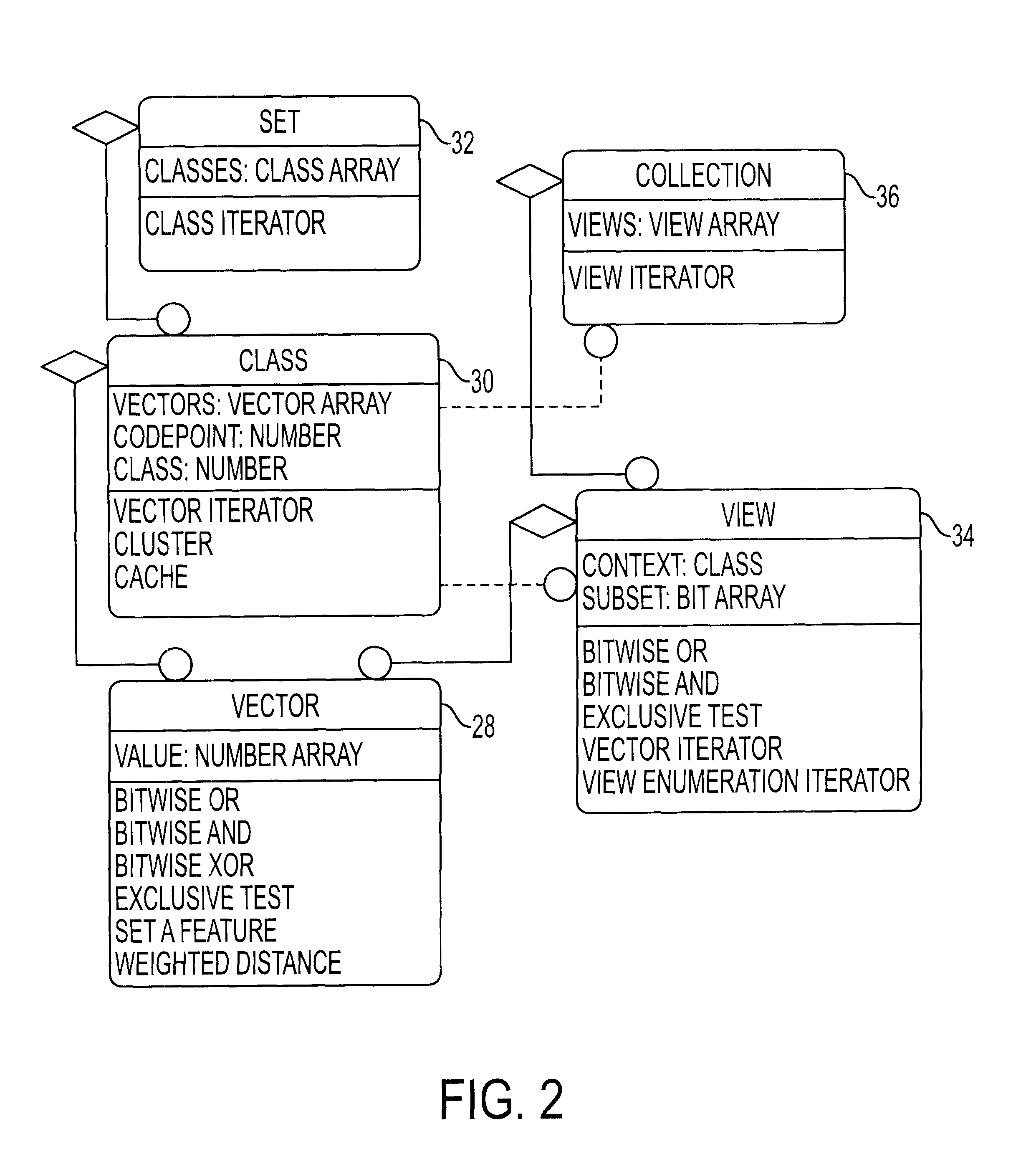Automatic method for developing custom ICR engines
a technology of automatic development and engine, applied in the field of computer-automatic method for creating image recognition engines, can solve the problems of mixed languages presenting unique problems, insufficient addition of new features, and insufficient improvement of character recognition engine performan
- Summary
- Abstract
- Description
- Claims
- Application Information
AI Technical Summary
Problems solved by technology
Method used
Image
Examples
Embodiment Construction
Referring now to FIG. 1, with the feature selection algorithm of the invention and a suitable prior art ICR tool, it is now possible to develop and test ICR engines that are customized to a source data set such as indicated in the block 10, Potential Source Material. A small portion of the source data is selected as a training set in block 12. Using a suitable prior art base ICR tool, this training set is properly segmented and a truth model established for each of the characters, blocks 14 and 16.
The segmentation takes as input the document image and produces as output a list of character coordinates from the image. The literature contains many methods for doing segmentation, many of which would be suitable here. For example, the segmenter used in the preferred embodiment used image histograms to determine the lines and then clustered the connected components in a line, broken into strokes where needed, into the characters.
The resulting characters are then automatically clustered i...
PUM
 Login to View More
Login to View More Abstract
Description
Claims
Application Information
 Login to View More
Login to View More - R&D
- Intellectual Property
- Life Sciences
- Materials
- Tech Scout
- Unparalleled Data Quality
- Higher Quality Content
- 60% Fewer Hallucinations
Browse by: Latest US Patents, China's latest patents, Technical Efficacy Thesaurus, Application Domain, Technology Topic, Popular Technical Reports.
© 2025 PatSnap. All rights reserved.Legal|Privacy policy|Modern Slavery Act Transparency Statement|Sitemap|About US| Contact US: help@patsnap.com



